
By Angelo Randaci, Earth’s Ally Horticulturist
Angelo’s passion for plants has led him to explore many areas of horticulture including research, grounds management, technical training, design and nursery management.
Plant propagation is a magical, gratifying experience. While some plants are challenging to propagate, others are extremely easy. Here are some easy-to-propagate (and grow) houseplants that will allow you to take part in this fascinating process with success.
Plant Propagation Benefits
Propagating plants has a variety of benefits, including:
- Propagating your favorite plants by cuttings, offsets or division will allow you to maintain the original characteristics of the plant, color, height, habit, etc.
- Propagating is the most budget-friendly way to acquire more plants. You can expand your collection more economically and much faster than propagating by seeds and you’ll have extra giveaway plants for friends and family.
- Just in case you lose a plant for whatever reason, you will have backup plants to replace them.
- Few tools are necessary. All you need is a sharp cutting tool such as pruners or scissors, rooting media, a container, and/or water.
- It’s beneficial for the plant. It will help make your plant bushier by removing long stems. While you’re pruning your plant, you might as well propagate it.
- It is very rewarding. If you enjoy taking care of your houseplants, creating new plants and watching them grow is a step up from purchasing new plants.
Plant Propagation Media
Water
All the plants on this list can be propagated in plain water. To propagate with water, you need a glass container, water, a sharp cutting tool, and a healthy plant to take your cuttings. Your container can be either clear or colored glass. Clear glass allows you to see the roots, which is an attractive feature but watch out for algae that will grow more quickly in clear than colored glass. I prefer colored glass for this reason.
Propagating in water is certainly the easiest, cleanest method but roots that have developed in water will need to adapt to their new soil conditions. When transplanting from water to soil it is important to keep the soil moist for the first few weeks until the roots become established.
Water Quality
You can use either tap, rain, filtered or distilled room temperature water. Do not use water treated with water softeners. If using tap water, let the water sit in its container for a few hours or overnight to dissipate chlorine. Some municipalities use chloramine instead of chlorine which does not dissipate readily. Ask your local water provider which is used. Chloramine can be neutralized by several types of filters including reverse osmosis, ultraviolet light and activated carbon.
Rooting Media
Use a high-quality potting mix for propagation. The mix should be very well drained. You can easily check drainage by putting your mix in a container and watering it. Water should not pool on the surface but should drain quickly. The addition of perlite to your favorite mix (about 20%) will ensure adequate drainage while still conserving moisture. My favorite propagation mix is 50% perlite and 50% peat moss.
You can even use straight sand as your propagation media. Do not use play sand because its fine texture does not provide enough aeration. Use course builders sand instead.
Plant Propagation Methods
Division
Division is simply dividing plants by gently separating them. This is only possible for plants that grow from multiple stems, offsets, or form a clumping habit. The easiest plants to divide on this list are spider plants and aloes. Offsets are tiny plants formed from stems off the parent plant and are illustrated in this list.
Cuttings
The three main types of cuttings include leaf cuttings, aerial root cuttings, and leaf node cuttings. Leaf cuttings are whole leaves removed from the parent plant and rooted. Leaf node cuttings are taken from the area where the leaf joins the stem. Aerial root cuttings are above-ground roots that form off the stem, usually at a node.
Rooting Hormones
While rooting hormones are beneficial for difficult-to-root plants such as hardwood cuttings, they are not necessary for any of the plants on this list.
11 Easy-to-Propagate Houseplants
Pothos, Philodendron, Monstera, and Arrowhead Vine Plant Propagation
Pothos, philodendrons, monstera, and arrowhead vines belong to the same family, Araceae. These plants are grouped together here because propagation is the same for each of them as well as the many different colors and forms available. Each has a vining habit lending itself to growing either in a hanging basket or on a support to grow as a climbing vine.
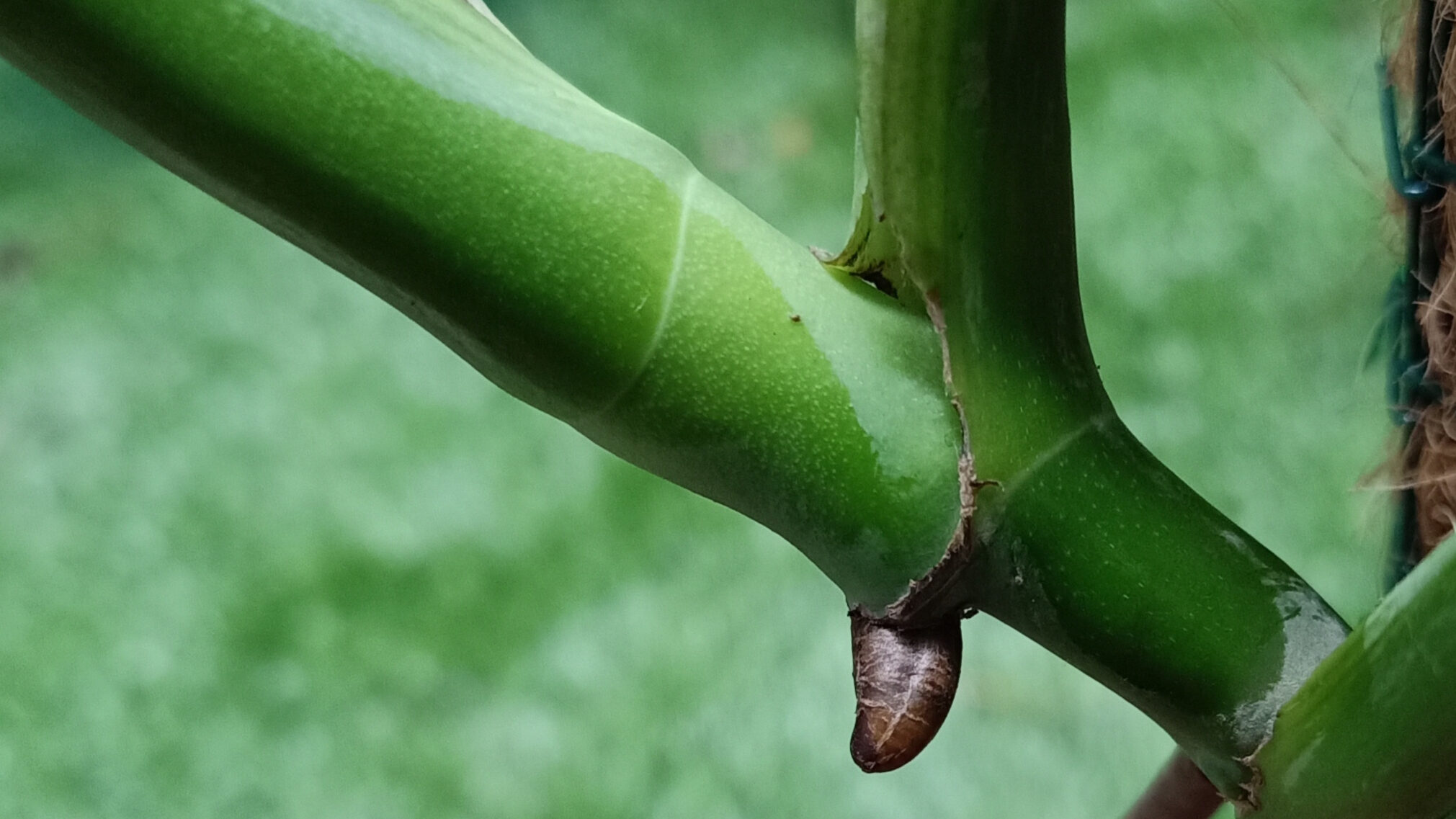
Propagate plants from this group by aerial root cuttings. These cuttings are taken just below a node. The nodes are areas where leaves emerge along the stem. Aerial roots look like tiny bumps or sometimes they resemble the beginning of new roots.
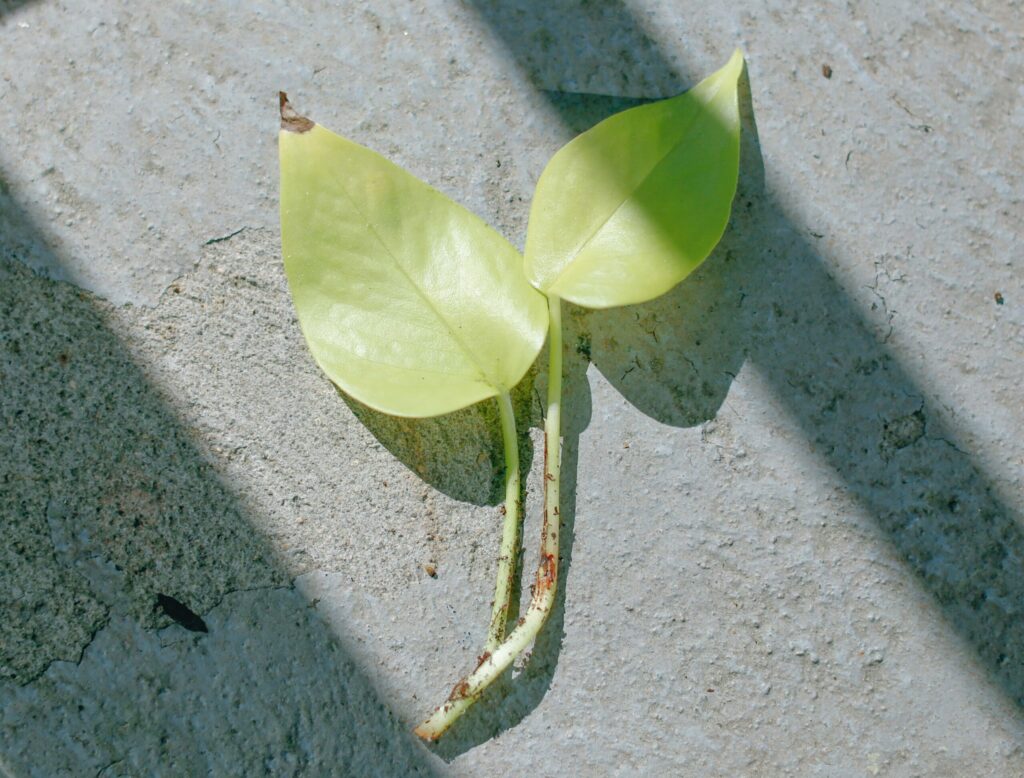
To propagate this group of plants:
- Choose a healthy main stem. A good time to do this is anytime you need to prune your plant.
- You can either cut stem pieces with two or three leaves or at a single node if you want to maximize your numbers.
- If rooting in water, choose a container with a large enough opening to accommodate your cuttings and allow for easy removal once your plants have rooted. Place your nodes in the water making sure the leaves are above water, but nodes are completely covered. Keep them covered with water and change the water every week or so. Place your container in a brightly lit area. Avoid direct sunlight.
- If rooting in potting mix, follow the same procedure making sure the nodes make contact with soil at all times. Do not cover leaves. Keep soil moist.

Strawberry Begonia and Spider Plant Propagation
Spider plants and strawberry begonias both grow plantlets from nodes along long stolons. These plantlets are the primary method of propagation. If rooting in water, choose a clean, glass bottle or jar and fill it with water.
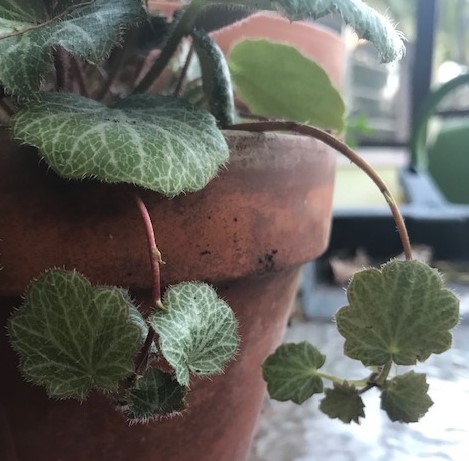
Take your cuttings. Choose the largest plantlets for cutting. They have the best success rate. Carefully remove the plantlets from the stolon. You can either leave the stolon if you like the way it looks or remove it from the parent plant. Place the plantlet into the water making sure the bottom of the plantlet is covered.
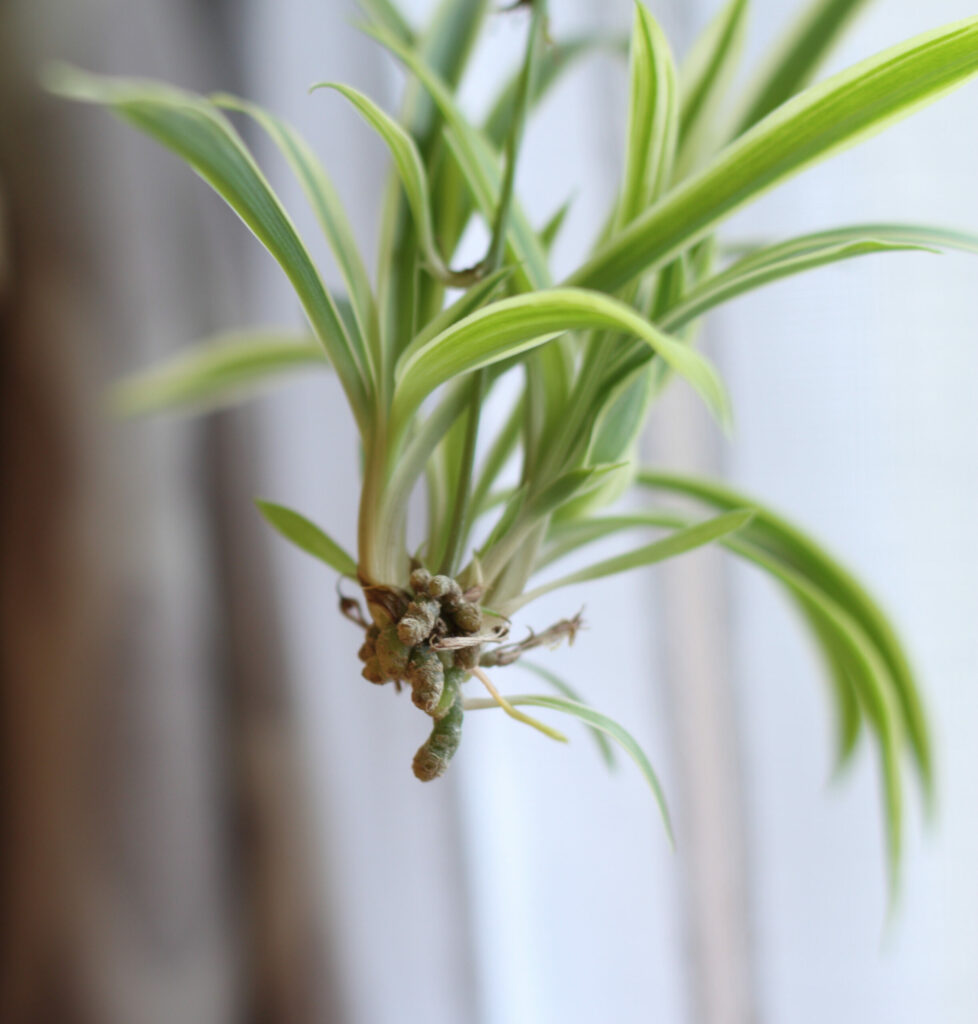
Place your container in bright, indirect sunlight. Change the water once a week or whenever the water gets cloudy. Once new roots develop, transplant them into a well-draining potting mix and keep them moist until it becomes established. When you see the first signs of new growth, water on a regular schedule.
Both spider plants and strawberry begonia plantlets can go directly into a well-draining potting mix. Keep media moist until your plant is established.
Spider plants propagate easily from division. Simply remove the parent plant from its pot and remove the soil to get a better view of how your plant is growing. Your plant can be divided if there is more than one stem.

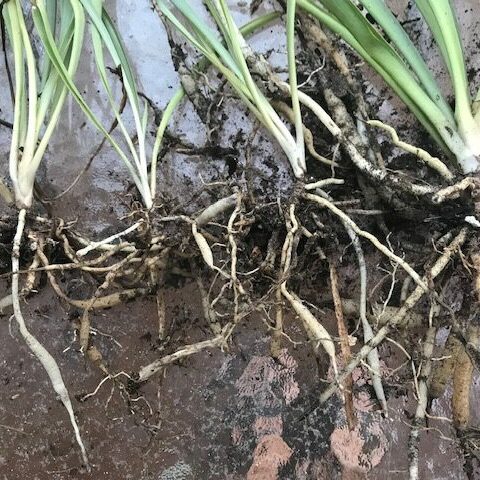
Aloe Plant Propagation
Aloe is a succulent plant that is easy to propagate by offshoots or division. If your parent plant consists of a large clump of plants, you can easily divide them.
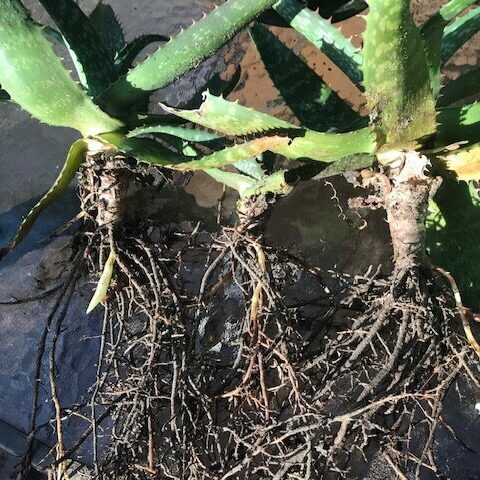

Offsets (often called pups) are basal shoots that grow from a bud at the base of the plant. Remove the parent plant from its pot and inspect the offsets. The offsets, if mature enough will have formed their own roots. Gently pull the offshoots keeping the new root systems intact.
If the pups are firmly attached, you may need to cut them with a sharp knife to remove them. Let them sit in a dry dimly lit area for a day before repotting. The aloe plants will form calluses over the freshly cut areas. This will avoid rotting issues. If your offsets already have roots, pot them directly in potting mix.
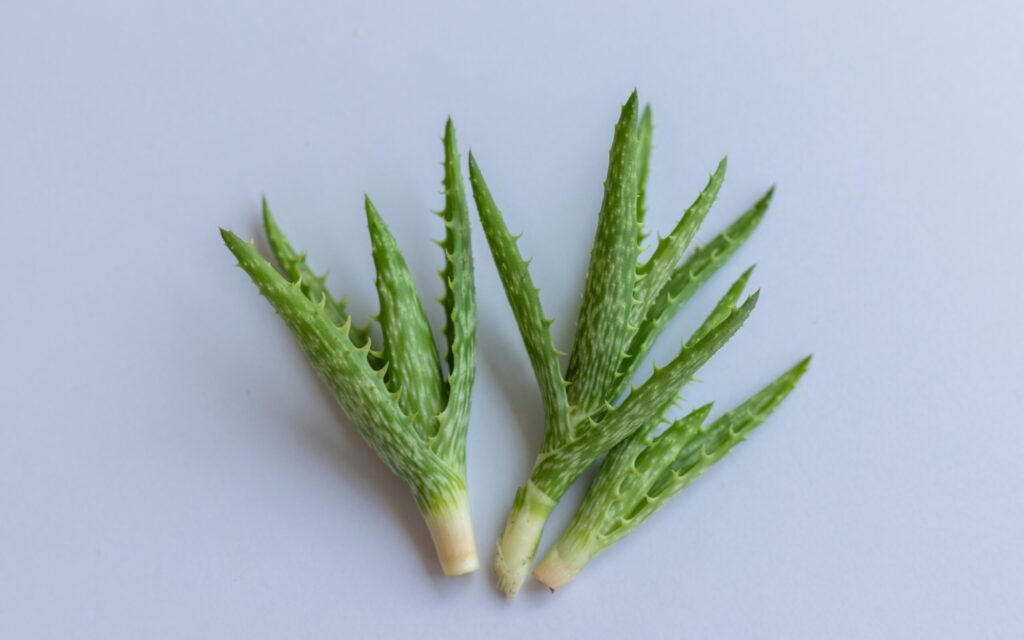
Repot in a well-draining mix such as a potting mix formulated for succulents. If using a standard potting mix, add perlite to the mix, one part perlite to four parts potting mix. Place your new plants in a bright indirect light. Follow the same watering schedule as your other succulents.
You can also propagate aloes from leaf cuttings. This method is less successful and takes longer to grow a new plant. Cut a leaf off the parent plant and leave it out of the soil for three to five days or until a callus has formed. Once callused, transfer your leaf into a well-draining pre-moistened potting mix. Keep the soil lightly moist until established.
Succulent Plant Propagation: Sedums, Echeveria, Sempervivum, Jade
This group of succulents will propagate either by stem cuttings, leaf cuttings, or by division.
Division
Division is the easiest way to develop new plants. Gently dig under the offsets and see if they have formed roots. If they have roots, simply separate them from the main plant. You may need to cut them from the main stem. Repot in a succulent mix and water on the same schedule as your other succulents. This method works especially well with sempervivums, echeverias, and sedums.
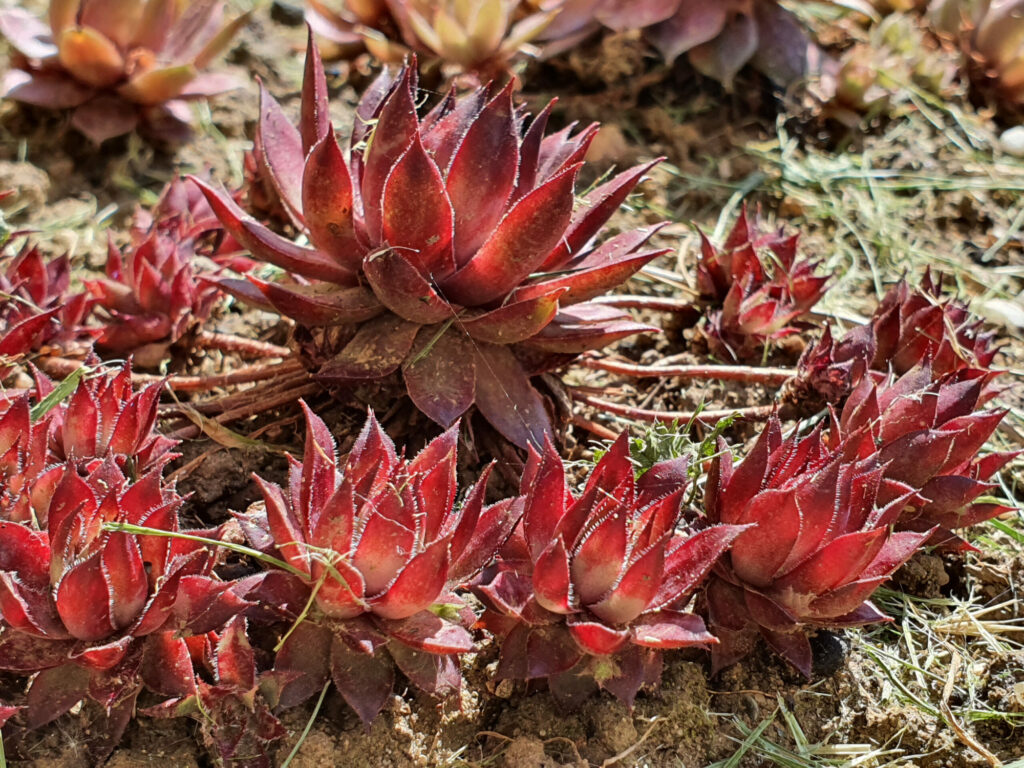
Stem Cuttings
stem cuttings are a great way to propagate leggy plants. Simply cut the stem 2 or 3 inches long above a leaf on the stem. Pull off the bottom set of leaves. Set your cutting out in an indirect lighted area until callus forms on the end of the stems. The next step is to prepare a very well-drained soil media. You can use a commercial succulent mix or make your own.
To make your own, mix a standard potting mix with enough perlite or sand so water moves easily through the mix. If it pools on top of the soil surface, add more perlite or sand. I like to put my cuttings in small clay pots. Do not let the soil dry out but keep it lightly watered. Too much water and your cutting will rot. Roots will form after 2-3 weeks. A good indication that your plant has roots is when you see new growth on the cutting. Once it has rooted, water on the same schedule as your other succulents.

Leaf Cuttings
To take leaf cuttings, gently remove the leaves by either giving them a twist or use a sharp blade. Try to cut close to the stem. If you can cut a small piece of stem with your leaf, your success rate will improve. Place your leaf cuttings on top of your well-drained soil media. You do not need to stick the cuttings into the media. Do not let the soil dry out. Little plantlets will form on the cut end of the leaf. Sometimes new plants will form, but no roots. Don’t worry, roots will eventually form.
Wait until you have an inch or two of roots before moving them to pots and keep the roots covered with soil. Your original leaf cutting will eventually shrivel up and die as the new baby plant grows.

Plant Propagation Tips
You can use any sharp cutting tool. I prefer pruners, sharp scissors, or knives. Box cutters work well for making fine, precise cuts. Sterilize all tools before using them.
Placing a pothos cutting in with your other cuttings if rooting in water is beneficial as the pothos cutting adds auxins to the water that will speed up the rooting of your other cuttings.
If propagating in water, change the water regularly once a week, or when the water becomes cloud,y or if leaf debris falls in the water because this can cause algae or mold growth. If using clear glass for rooting in water, place something dark on the outside of the glass to prevent light from entering the water or use a dark glass for rooting. This will help keep your water clean.
Take more cuttings than you need. Some of your cuttings may not root, so take plenty of cuttings to make sure you have enough. Extra cuttings can always be added to your parent plants to make them fuller.
Help keep your newly propagated plants healthy by treating them with Earth’s Ally 3-in-1 Plant Spray once a week to prevent pest infestation. We’d love to hear how you’re using Earth’s Ally 3-in-1 Plant Spray. Share your experience and stay connected with the #EarthsAlly community on Facebook, Instagram and Twitter for access to our latest blog posts, giveaways and exclusive promotions.
